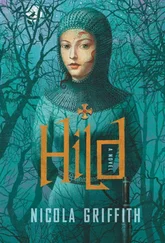Lore feels relieved but vaguely disappointed.
Lore is almost thirteen. She has mulled over Tok’s advice for several months. For her thirteenth birthday she asks for, and gets, a camera and edit board. It is not hard to use: point the camera and record; slide the disk into the edit board, chop out sequences, and paste it back together to make whatever you wish. Despite herself, she becomes interested, soon exhausting the possibilities of one camera and one board and largely unaware subjects. She adds a storyboarder with basic library. Now she has thousands of faces and voices that she can dub in over those of her family.
Oster and Katerine think of her films as a diverting hobby, and after Lore has shown them deliberately inane clips, they do not ask her what she is up to. So when she asks for new library cards for her storyboarder, they smile indulgently and buy them, not asking what she is playing with. In this way, she obtains several adult libraries.
She starts with Tok’s subscriptions to art zines and parlays them into membership in all the online camera zines she can find, hanging silently in the net, soaking up all the tricks with camera, edit board, and storyboarder that professionals, enthusiastic amateurs, and self-labeled underground anarchists boast of to each other. She never leaves messages, never lets anyone know she has been there. She trades in one camera after another until she has a Hammex 20, with which she can make films as crisp and sophisticated as any net entertainment. She keeps learning and begins to enjoy her secret life.
She discovers that if she wanders the house and gardens with her camera, Katerine does not start conversations about bioremediation in Bangui or Luanda. If Oster starts talking about getting up before dawn to go game fishing, Lore casually mentions that she will be up most of the night, filming moonlight on water for her latest art documentary. Soon she carries the Hammex with her wherever she goes, but the films she makes are secret.
Her films are wish-fulfillment, for a while: Oster and Katerine eat romantic dinners together, kiss, hold hands, disappear smiling into the bedroom. Lore, whose body is beginning to wake, wonders how her parents look when they are in bed. She watches some of the standard pornography scenes from her library, then learns how to morph the faces of her parents onto the bodies of the library actors.
Before she goes back to school, she films the pond and the quay, every room of Ratnapida. When she goes back to her dorm room, she learns how to splice setting and character, and her films fill with porn actors wearing her parents’ faces, fucking doggy-style on the copter pad, hanging upside down from the stone quay, thrashing in the carp pond. They cry out with her parents’ voices, get dressed using the same habitual mannerisms. They are her parents. As her parents become more distant toward one another, Lore brings them flesh to flesh, sometimes inserting dialogue. It does not matter to her whether their words to each other are cruel or kind; they communicate, Her dreams become confusing.
Once she almost calls Tok, but then she gets scared. He will not understand. She watches her films, over and over, and wonders what sex is really like. She lies awake at night and listens to her school friends, wondering what they know, and what they do.
The next day I plugged in my film library for the first time in months. I had to believe Spanner about the hole in the pattern; that was her job. My job was to create a short commercial that would be indistinguishable from the real thing; one that would persuade the rich to part with their money—and do it fast enough for us to get off the air, get the money out of the account, and disappear before net security could work out that their signal had even been piggybacked.
What would work best, I had decided, was an appeal based on charity to older people, those Tom’s age or thereabouts.
Those born before 1960 had the hardest time adjusting to change. They were the ones who would suddenly stop in the middle of the street as if they had vertigo when some shopwindow flared and called out, or get that haunted, bewildered look when the PIDA readers changed again, or the newstanks swapped to a different format.
It was a very specific expression: hollow-cheeked, eyes darting, looking for somewhere to hide. I had seen that same look on the faces of war refugees, or the foreign-speaking parents of native-speaking children. Older people were immigrants in their own country. They had not been born to the idea of rapid change, not like us.
I needed a thirty-second feature—but the real punch had to be in the first eight of those seconds. I needed to know what was going on in the world of commercial net entertainment.
I took breakfast into the living room and ate while I flipped through the offerings: a two-hour docudrama about a woman and her child fending off urban predators in a burned-out Sydney tenement; a lot of breathy pseudonews; an interactive version of The Thirty-Nine Steps. I watched that one for a while, fascinated at how the original film was utterly destroyed by turning it into a game, then finally settled down to a modern version of Shakespeare’s Othello. I only needed to watch about twenty minutes to see how visual fashions had changed in the months since I had left Spanner.
What seemed to be in favor was a kind of neomodernism, a fascination for details and emphasis on texture. What I had in my library would not be good enough. Oh, there were some tricks I could play: I could redigitize chunks of it, in effect reshooting frames to give the footage a “live” feel, enabling me to make the pans slower than the original, the focuses more lingering. But I would need to do some recording of my own. For that I would need a model.
I sipped at my tea. Maybe Tom would be interested.
I turned the screen off and stared out of the window. The sky looked the same today as it might have done a hundred years ago, or a thousand, or fifty thousand. I wondered what it must have been like to grow up in a community that stayed more or less the same, from birth to death. To be able to reach ten, or twenty-five, or fifty, and think, There, I’m not going to learn any more. I know enough to live my life.
Magyar stayed out of my way for the next few days, but I caught her eyeing me speculatively once or twice and knew that this was merely an undeclared truce; she had not given up. With the systems back up and the two extra bodies, it was almost relaxing.
I whistled as I transferred the figures on the board to a slate.
Paolo came into the readout station. “What does that readout there mean?”
“I thought you were trimming back the rushes on forty.”
“All done.” I looked. They were. He pointed to the green numbers again. “What does that measure?”
His limbs were still stiff, still carefully nowhere near touching me, but the expressionless mask that usually curtained his face had parted, just a little. It was like watching an anemone uncurl and expose its mouth, delicate and beautiful. “Nitrogen. In various forms.”
“What’s the difference between the kinds?”
It would have been so easy to shrug, profess ignorance, and just go about our work routine, anonymous and safe, but he was leaning forward, peering, reaching out to touch. He might never ask for something so simple, so hard to give, again. And if those tentacles tightened once more they might never loosen. So I pointed. “Nitrites, free nitrogen, ammonia. Then various subdivisions. But they’re not as important.”
“Show me again. More slowly.” I did. He nodded after each one. His lips moved as he repeated the names to himself.
“Paolo, do you want to learn?”
He shrugged guardedly. “Sure.”
Читать дальше












